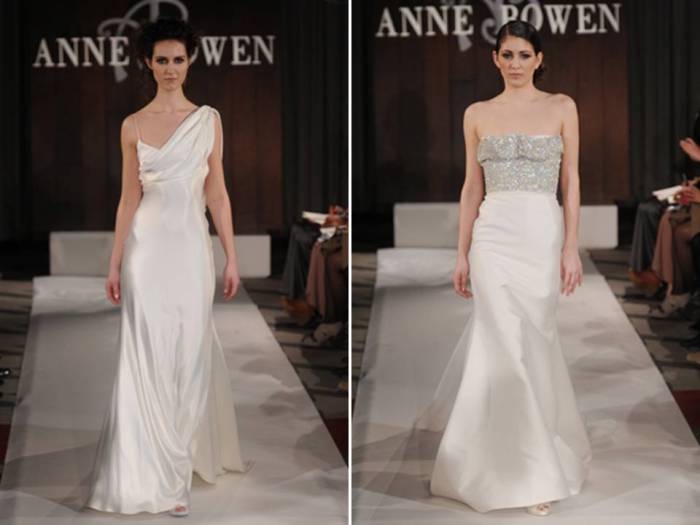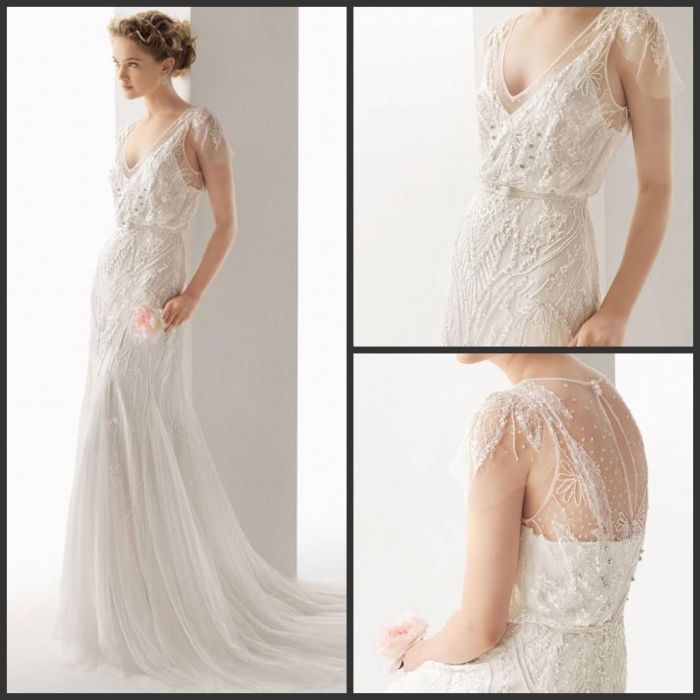Types of Boning in Wedding Dresses
Wedding dresses with boning – The choice of boning significantly impacts a wedding dress’s structure, silhouette, and overall comfort. Different materials offer varying levels of flexibility, durability, and aesthetic effects. Understanding these differences is crucial for both designers and brides.
Plastic Boning
Plastic boning is a common and cost-effective option. It provides moderate support and is relatively flexible, making it suitable for less structured gowns. However, it’s less durable than other options and can bend or break more easily, especially with repeated use or improper handling. It’s often preferred for lighter fabrics and less structured designs.
Spiral Steel Boning
Spiral steel boning offers superior support and durability compared to plastic. Its flexible yet sturdy nature allows for a more defined shape and better hold, particularly in heavier fabrics or styles requiring more structure. While more expensive, it provides long-lasting support and maintains its shape effectively. It’s an excellent choice for creating sharp lines and well-defined silhouettes in gowns with intricate details.
Whalebone Boning
Historically used, whalebone boning is now largely replaced by synthetic alternatives due to ethical and sustainability concerns. While offering excellent support and a natural curve, its rarity and ethical implications make it less accessible and practical for modern dressmaking.
Comparison of Boning Materials
| Material | Cost | Lifespan | Ease of Use |
|---|---|---|---|
| Plastic | Low | Short to Medium | Easy |
| Spiral Steel | Medium to High | Long | Medium |
| Whalebone (Synthetic Alternatives) | High | Long | Medium |
Boning Placement and its Impact on Silhouette
Strategic boning placement is key to achieving the desired silhouette. The number, length, and position of the bones directly influence the dress’s shape, creating a range of styles from flowing A-lines to form-fitting mermaids.
Boning Placement Examples
In an A-line gown, boning is typically placed vertically along the bodice, providing structure and support without restricting movement. For a mermaid gown, the boning extends further down the hips, creating a close fit before flaring out at the knees. A ballgown often incorporates extensive boning in the bodice and potentially in the skirt’s upper layers to maintain the voluminous shape.
A sweetheart neckline might utilize horizontal boning at the top to create a smooth, defined curve, while a strapless dress relies heavily on vertical boning for support and to prevent sagging.
Sweetheart Neckline: Imagine a series of vertical bones running from the shoulder straps to the waist, complemented by a few horizontal bones just below the neckline to shape the sweetheart curve. The vertical bones support the bust and maintain the bodice’s structure, while the horizontal bones enhance the curve.
Strapless Neckline: Visualize several vertical bones extending from the shoulder area to the waist, closely spaced for maximum support. These bones work in tandem to hold the bodice in place and prevent sagging. The spacing is crucial; too far apart and the bodice loses its shape, too close and it becomes uncomfortable.
Halter Neckline: Picture vertical bones along the bodice, but the placement would be adjusted to accommodate the halter straps. The bones would provide support, but their position would be altered to seamlessly integrate with the halter design.
Diagram of Boning Placement for a Cinched Waist
Imagine a bodice with vertical boning extending from the shoulders to the waist, closely spaced for support. At the waistline, a horizontal row of boning would create a defined cinch. Additional vertical boning could continue below the waist, depending on the skirt style. The horizontal boning at the waist acts as a structural element, pulling the fabric in to create a defined silhouette.
Wedding dresses with boning offer excellent structure and support, creating a flattering silhouette regardless of the venue. For a rustic-chic winery wedding, consider a flowing A-line or fit-and-flare gown with boning to enhance its shape. Finding the perfect dress is easy when you explore options specifically designed for a winery setting, such as those found on this helpful guide: wedding dresses for winery wedding.
Ultimately, the right boning will ensure your dress looks stunning in photos and feels comfortable throughout your special day.
Boning and Different Wedding Dress Styles
The type and placement of boning vary significantly depending on the wedding dress style. The fabric choice also influences the boning selection; heavier fabrics often require more robust support.
Boning in Various Styles
- Sheath Dresses: Often utilize flexible boning for a streamlined silhouette.
- Empire Waist Dresses: Typically require minimal boning, focusing primarily on the bodice for support.
- Fit-and-Flare Dresses: Combine vertical boning in the bodice for structure and potentially some horizontal boning at the waist for a defined shape.
- Ballgowns: Often feature extensive boning in the bodice and potentially the skirt’s upper layers for significant support and to maintain the voluminous shape.
- Mermaid Dresses: Utilize significant boning, extending down the hips to create the close-fitting silhouette before flaring at the knees. This requires strong, durable boning.
Challenges and Solutions with Different Fabrics
Lace can be delicate and may require careful boning placement to avoid damage. Silk and satin, while luxurious, can be prone to slipping and may benefit from additional boning for support. Choosing appropriate boning and placement is key to preventing damage and ensuring the dress drapes well.
The Role of Boning in Comfort and Fit

Source: onewed.com
Properly placed boning enhances both the comfort and fit of a wedding dress, particularly for extended wear. It provides support, prevents sagging, and helps the dress move gracefully with the wearer.
Impact on Comfort and Movement
Well-placed boning ensures the dress sits comfortably against the body without digging or causing discomfort. It allows for a more natural range of movement, preventing restrictions and ensuring the bride feels confident and at ease throughout the day. Insufficient boning can lead to discomfort, sagging, and an overall less flattering fit.
Potential Issues from Incorrect Boning
Incorrect boning placement can lead to discomfort, uneven shaping, and potential damage to the fabric. Too much boning can restrict movement and feel uncomfortable, while too little can result in a shapeless and ill-fitting gown. The choice and placement of boning are crucial considerations for ensuring both style and comfort.
Guide to Selecting a Comfortable Dress
When selecting a wedding dress, consider the type and placement of boning. Try on the dress and assess its comfort level during movement. Ensure the boning doesn’t dig into your skin or restrict your movement excessively. A well-constructed dress with appropriately placed boning will offer both style and comfort.
Maintenance and Care of Wedding Dresses with Boning
Proper care is essential to maintain the integrity and longevity of a wedding dress with boning. This includes appropriate cleaning, storage, and addressing potential issues.
Proper Care and Storage
Always follow the care instructions provided by the designer or cleaner. Avoid harsh chemicals or rough handling that could damage the boning. Store the dress in a cool, dry place, preferably in a garment bag to protect it from dust and moisture. Avoid hanging the dress on a hanger for prolonged periods, as this can stretch or damage the boning.
Addressing Potential Problems
Over time, boning can become bent or broken. If this occurs, it’s best to seek professional help for repair. Attempting to fix the boning yourself could cause further damage. Regular inspections during storage can help detect any issues early.
Professional Cleaning and Preservation, Wedding dresses with boning

Source: dhresource.com
Professional cleaning and preservation are highly recommended for wedding dresses with boning. Professionals have the expertise to clean the dress safely without damaging the boning or delicate fabrics. Preservation ensures the dress remains in excellent condition for years to come.
FAQ Explained
Can I alter the boning in my wedding dress?
Altering boning is best left to experienced seamstresses. Improper adjustments can damage the dress or compromise its structure.
How long does boning typically last?
The lifespan of boning varies depending on the material and care. High-quality boning can last for years with proper maintenance.
Will boning show through my dress?
High-quality boning is usually flexible and designed not to be visible under the fabric. However, very thin fabrics might show the Artikel subtly.
Is boning uncomfortable?
Properly placed boning shouldn’t be uncomfortable. Poorly placed or low-quality boning can cause discomfort or pressure points.
